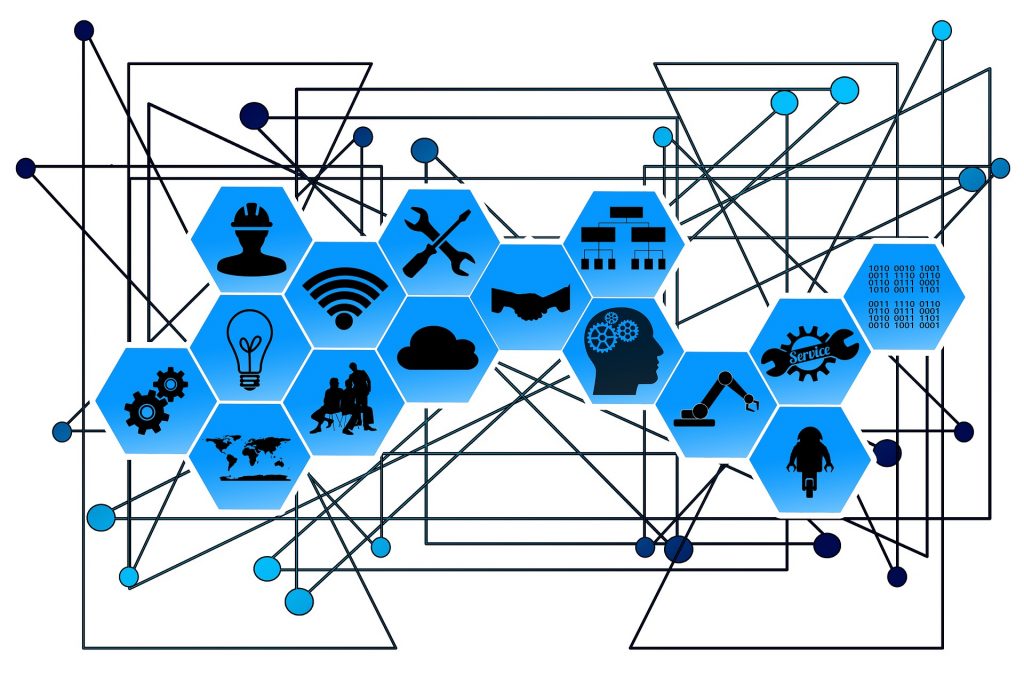
In popular media, industrial automation has a bad reputation. People are afraid that robots are coming to steal their jobs, and while it is true that some parts of the workforce may be replaced with automation, it’s not all bad news. Industrial automation can have many benefits, and smart sensors are the key to its success.
What Are Smart Sensors?
These sensors are designed to acquire information and transmit it back to a local network. They can be any shape or size, and they can work in all sorts of different surfaces and applications. Unlike traditional sensors that can only determine whether an object is there or not, smart sensors can collect a plethora of information. Depending on their configuration, these devices can detect temperature, humidity, tension and more.
As part of an IoT network, these sensors can be used to keep track of medication temperature, ambient conditions for sensitive electronics and even bacterial growth on food.
Augmenting Industrial Automation
How can smart sensors help augment industrial automation? The possibilities are only limited by programming. For products that experience frequent line changes during their manufacturing, smart sensors can streamline the process by keeping track of everything much faster than the human eye can manage.
For production lines that deal with products of varying size or shape, sensors can reset the production automatically without slowing it down. Flexible machinery is becoming more prominent, as manufacturers try to reduce space and improve efficiency. Currently, transitioning from one production line to the next requires some downtime to rework the equipment so that it’s ready for the next product.
Sensors and automation can also help augment the entire industry and offset the growing labor shortage. As experienced workers reach retirement age, there aren’t enough skilled laborers entering the industry to complete the work. Transitioning to partial or full automation before these individuals retire can help keep the factories and plants running.
This might also help to entice more young graduates to enter the manufacturing industry. Generation X and millennial graduates have a home-field advantage, being raised in a world that has embraced technology so wholly. They’re always looking for ways to use their technical skills in the workplace. Giving them the tools to do so could help counter the labor shortage.
These are just a few examples of the possible applications for smart sensors across the manufacturing industry. Let’s take a closer look at some of the more specific forms of this emerging technology.
Implementing Smart Sensors in Industrial Automation
Smart sensors are popping up across the industry. Here are a few specific applications that are being explored in industrial automation:
1. Compression/Pressure
This is vital for companies that work with substances under pressure as well as those that rely on compressed air to power tools and machinery, or hydraulics. Smart sensors can detect the exact pressure in these systems and alert maintenance staff if there is a fluctuation that could indicate a problem.
On the other side of the coin, these sensors can detect tensile strength and pressure, making them ideal for automation. An automatic stretch wrapper, for example, could be equipped with safety sensors to ensure the pallets are wrapped tightly enough to secure the product, but not so tightly that it causes damage.
2. Temperature
The applications for smart temperature sensors are endless. They could be placed inside of ovens, furnaces or kilns to ensure the equipment is getting hot enough. They could also be placed inside of refrigerated rooms to ensure they’re staying at the pre-set temperature — or even on food packaging to ensure any perishable products remain within the safe temperature zone. They can be used to detect if a machine is overheating as well. The list goes on, limited only by the temperature that the sensor can survive, and its programming.
3. Moisture
For sensitive electronics, dry goods, like rice and flour, and other moisture-sensitive products, a smart sensor that can detect changes in ambient humidity could mean the difference between a successful delivery and a massive loss.
4. Vibrations
Some equipment is sensitive to vibration. In others, excessive vibration is an indicator of a growing problem. In both cases, smart sensors can prevent issues before they cause costly downtime.
These are just a few of the potential applications of smart sensors in industrial automation. There are many more as well.
Smart Sensors and Industry 4.0
We’re living in the midst of the fourth Industrial Revolution, also called Industry 4.0 as a nod to the technology-heavy framework of this revolution — but how do smart sensors factor in?
The foundation of Industry 4.0 is the Industrial Internet of Things (IIoT). In an Industry 4.0 facility, everything is connected — even newer appliances are Wi-Fi enabled — and the basis of this connectivity is the sensors that transmit data to a control computer. Without sensors collecting information, the IIoT doesn’t exist.
Looking Toward the Future
We’re at the beginning of Industry 4.0, and many of these technologies are still in their infancy, but it’s an exciting time to be part of the manufacturing industry — or any industry. This is just the start of an automation revolution where robotics will change the way we look at manufacturing forever. Smart sensors are just the beginning, but they will provide the foundation we can build marvelous structures upon, as soon as the technology is ready for mass marketing.
